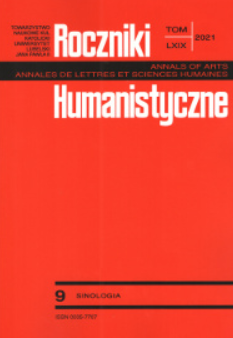SYSTEM WŁADZY W CHRL W OKRESIE REFORM: EWOLUCJA, WYZWANIA, SPRZECZNOŚCI
THE EVOLUTION OF CHINA’S POLITICAL SYSTEM IN THE REFORM AND OPENING-UP ERA: STRUCTURES, PROCESSES AND CHALLENGES. PART II: 2012-2020
Author(s): Józef PawłowskiSubject(s): Political history, Government/Political systems, Political behavior, Present Times (2010 - today), Corruption - Transparency - Anti-Corruption
Published by: Towarzystwo Naukowe KUL & Katolicki Uniwersytet Lubelski Jana Pawła II
Keywords: Xi Jinping; collective leadership; consolidation of power; interest groups; anti-corruption campaign; advisory institutions;
Summary/Abstract: This paper analyses key developments within the PRC power structure and the Party’s leadership since the 18th Party Congress in the year 2012. The so-called “collective leadership”, which was the main decision-making mechanism in China during the 2000s, proved to be ineffective in terms of governing the country and managing intra-party affairs. With Xi Jinping’s rise to power after the 18th Party Congress, the governing apparatus has undergone a centralisation of power which has resulted in a significant shift in authority, from the main Party factions and government institutions to bodies under the direct supervision of the Secretary General. Xi Jinping’s main objective was the streamlining of the decision-making process and making the implementation of reforms more effective. Introducing such a governing model, significantly different from the well-established, since the 90s, “collective leadership”, began to be perceived as “one-man rule” and was followed by severe disciplinary measures, such as an anticorruption campaign, aimed at the weakening of influential factions and interest groups within the Party and government institutions. The last decade has also witnessed the formation of new groups in China’s ruling elite. Apart from the all-powerful Xi Jinping and his inner-circle of aides and political protégés, some new factions have emerged, being mainly associated with a certain view of China’s future development model (liberals, leftists, China-model advocates, intra-party reformers, etc.). The period since the 18th Party Congress has experienced a significant increase in the role of think-tanks, research bodies and experts in top-level policy planning.
Journal: Roczniki Humanistyczne
- Issue Year: 69/2021
- Issue No: 9
- Page Range: 91-110
- Page Count: 20
- Language: Polish

